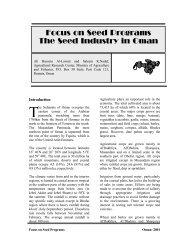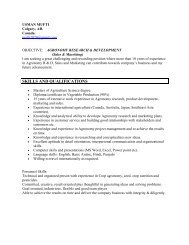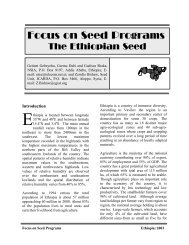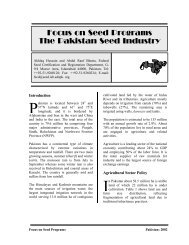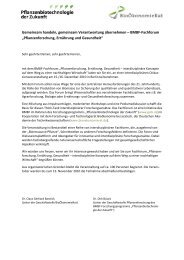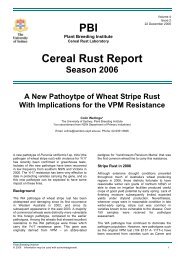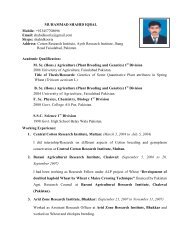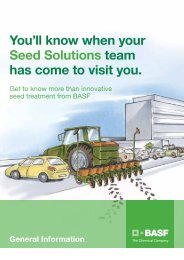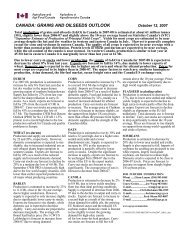Download newsletter - SeedQuest
Download newsletter - SeedQuest
Download newsletter - SeedQuest
You also want an ePaper? Increase the reach of your titles
YUMPU automatically turns print PDFs into web optimized ePapers that Google loves.
Seasons & Taste | October 2010 | 15<br />
Two Growing Systems for Red Peppers<br />
Pablo Mendoza, Assitant Breeder & PD, Sinaloa, pablo.mendoza@zeraim.com<br />
Zeraim Gedera’s varieties have all the<br />
characteristics required to meet the needs<br />
of the different markets. Zeraim has pepper<br />
varieties that can also be picked when they are<br />
green if the farmer so chooses, and they come<br />
in all sorts of different sizes – medium-sized<br />
peppers for the European market and large ones<br />
for the American market. Their shelf life is also<br />
long enough for them to be exported without<br />
losing their flavour or firmness. This is because<br />
the fruit has thick flesh. Peppers can be grown<br />
using the Spanish or Dutch trellising system,<br />
and still be profitable for farmers.<br />
Last season, Zeraim Mexico’s R&D department<br />
decided to assess the yields of some of the<br />
company’s pepper varieties in order to compare<br />
the two trellising systems used. The table below<br />
shows the sizes of the peppers grown for each<br />
variety, expressed as a percentage, the number<br />
of fruits grown and yield in kilograms per plant,<br />
as well as the final yield in kg/m² and boxes/<br />
ha (25 lbs).<br />
Figure 1 shows the yield obtained for each<br />
variety using the two systems. This graph<br />
shows that good yields<br />
can be obtained with<br />
both systems.<br />
Figures 2 and 3 show the<br />
distribution of sizes of<br />
good quality fruit for each<br />
variety and each system.<br />
Conclusions<br />
First of all, it is absolutely<br />
feasible to produce two-,<br />
three- or multi-stemmed<br />
plants using both systems<br />
without decreasing the<br />
yield. Although the Spanish<br />
system may be slower,<br />
this is compensated for<br />
by the high number of<br />
fruits, as the Spanish<br />
system produces more fruit<br />
than the Dutch system.<br />
In multi-stemmed plants<br />
the fruit size can also be<br />
considerably reduced.<br />
Fig 1 / Yield Boxes 25 Lbs/Ha<br />
Fig 2 / Precentage data distribution per fruit size<br />
Fig 3 / Precentage data distribution per fruit size<br />
Spanish<br />
Trellising<br />
Percent Data Distribution per Fruit Size of Exportation Market Fruit/Plant Kg/Plant Kg/M 2 25 LBS<br />
Variety Small Medium Large Extra Large Jumbo Boxes/Ha<br />
Cannon 11 18 24 39 7 15.3 3.8 13.4 11903.6<br />
Godzilla 8 19 26 38 9 14.6 3.8 13.4 11877.1<br />
Maquina 12 23 30 29 6 13.5 3.1 10.9 9686.8<br />
Coloso 4 12 17 43 24 11.9 3.6 12.6 11237.8<br />
Caucaso 10 14 24 24 28 10.8 3.5 12.3 10951.1<br />
Bragi 22 26 29 22 0 15.6 3.0 10.4 9220.6<br />
Valeria 10 19 29 38 4 12.2 2.7 9.5 8429.6<br />
Dutch<br />
Trellising<br />
Percent Data Distribution per Fruit Size of Exportation Market Fruit/Plant Kg/Plant Kg/M2 25 Lbs<br />
Variety Small Medium Large Extra Large Jumbo Boxes/Ha<br />
Cannon 7 16 24 38 15 12.9 3.8 13.2 11767.8<br />
Godzilla 7 19 20 40 14 12.4 3.7 12.9 11461.0<br />
Maquina 7 17 41 33 3 11.3 3.0 10.6 9437.9<br />
Coloso 2 8 25 32 32 11.8 3.8 13.4 11931.4<br />
Caucaso 4 8 28 36 24 10.7 3.4 11.8 10457.4<br />
Bragi 21 28 34 17 0 12.5 2.7 9.6 8531.9<br />
Valeria 9 16 31 42 3 11.6 2.9 10.2 9030.0



